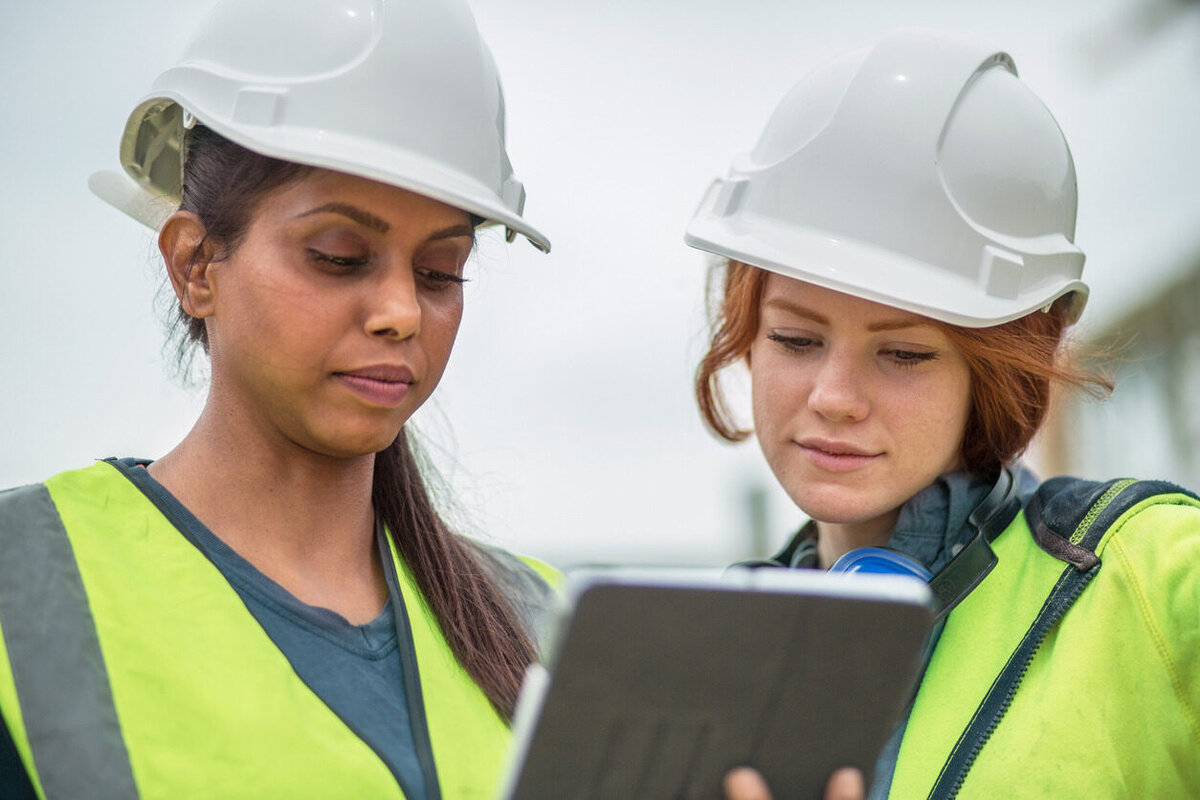From chatbots to self-driving cars, AI is in nearly every aspect of life. But what exactly is AI or artificial intelligence? Artificial intelligence is when certain machines display signs of human intelligence such as problem solving, decision-making, and more.
These machines focus on a particular set of tasks. For example, the well-known Siri or Alexa are programmed to answer your questions from what they can pull from online articles.
So, how does AI connect to the environmental, health, and safety (EHS) space? Keep reading to find out the applications of AI in EHS management to elevate your safety approach, including:
- Access to predictive and prescriptive analytics
- The identification of risk before incidents occur
- Enhancement of risk assessment processes
Access to predictive and prescriptive analytics
A robust reporting engine can provide a holistic view of safety performance across an organization. Artificial intelligence within these systems can take this one step further by providing EHS professionals with access to predictive as well as prescriptive analytics. How? Let’s start at the beginning.
EHS leaders focus on a combination of leading and lagging indicators to gauge safety status. This can range from the number and types of incidents, to the number of safety meetings and training sessions.
AI can take this to the next level by displaying patterns and trends based on the data it’s given. It can even provide you with an aggregated safety score to allow you to benchmark your company’s data against others in your industry, helping you gain a better understanding of the health of your safety program.
With AI, EHS professionals can now access predictive analytics which will help highlight what risks and hazards are present to anticipate what might happen. This can then lead to prescriptive insights where AI provides recommendations to help you achieve your EHS goals and create a safer workplace.

Artificial intelligence can help you take a more proactive approach to safety rather than a reactive one, as it can help highlight areas of concern, allowing you to take the steps needed to mitigate any risks.
The identification of risk before incidents occur
Another interesting application of AI in EHS management is through safety computer vision. Artificial intelligence software can connect to cameras found on site or CCTV, to identify unsafe behaviors which may lead to incidents.
How does this work? You must input information about possible risks and hazards in your organization, which AI would then learn and display in real time. EHS professionals cannot be everywhere on site at the same time, so this is a great way to gain insight into what’s really happening.
Once you can see these unsafe behaviors highlighted on camera, you can start identifying patterns which you can quickly address through training sessions or toolbox talks. Ultimately this will help you reduce the potential of an incident occurring and effectively protect your employees from harm.
Enhancement of risk assessment processes
AI-powered virtual assistants have helped transform EHS practices with the ability to enhance risk assessment processes. This helps streamline procedures and saves time.
For instance, EHS professionals can use virtual assistants by talking to them normally as if they were having a conversation, where it would then help log and report the incident. Instead of having to type or write this down, the virtual assistant would do it all! You could then take this one step further and ask the assistant how many times this incident has occurred and even suggest a corrective action.
AI could also help you write a risk assessment by generating checklists and even rewording questions on existing checklists. At times, when employees fill out the same checklists when completing incidents, they may tend to do them on autopilot because they know what’s coming next. Rewording questions can help make employees more present when answering questions, so they think more about the answers they’re giving.
It goes without saying that you must have someone check any checklists, questions, or corrective action suggestions generated by AI to make sure they’re correct. Artificial intelligence, though helpful, may miss the mark so having a competent person validate the output is always advised.

How AI will continue to shape the EHS world
Safety practices and procedures, and the right data to make fact-based decisions, can truly be enhanced with artificial intelligence. It can help EHS professionals make proactive decisions by finding risks or deficiencies in real-time, so quick decisions can be made. This is not to say that it can replace humans or what we do, but rather enhance our EHS processes.
“I like where things are headed,” says Gurveen Singh, Product Director at EcoOnline. “It's [AI] about augmenting and automating rather than replacing. I truly believe that and we’re seeing a lot of that shape up in the EHS space. It’s all about people adopting this type of technology and putting it to good use.”
Singh went on to say, “I think when EHS practitioners are thinking about how we can leverage AI, it’s about asking certain questions like where it makes sense. Realistically in some shape or form, AI will get adopted across the board. I think that’s where it’s headed.”
We couldn’t agree more, as this is an exciting space for the world of EHS. There's no doubt that it will continue to evolve, helping EHS professionals elevate their approach to safety to create safer places to work.
To find out more about this topic, watch our webinar Harnessing AI for Environmental, Health, and Safety now.
